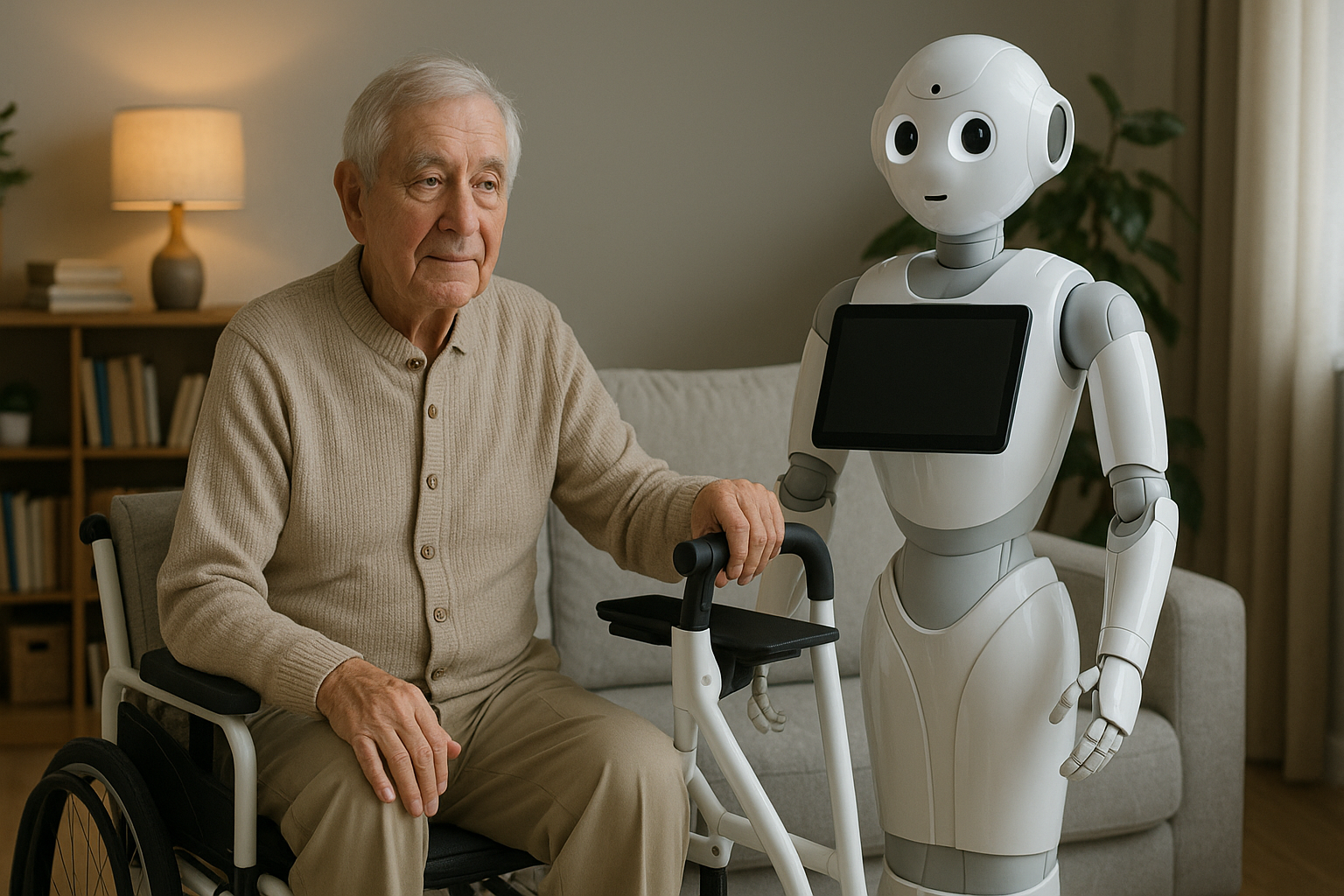Revolutionizing Elderly Care: The Role of Robotics in Senior Support

Robotics transforming elderly care
As the global population continues to age, societies around the world are facing the growing challenge of providing quality care and support for seniors. Traditionally, elderly care has relied heavily on human caregivers — family members, healthcare professionals, and support staff — whose time and resources are increasingly strained in the face of rising demand. In response, innovative technologies are stepping into the spotlight, with robotics leading the way in transforming senior support.
Robotics offers a promising solution to many of the key issues in elderly care, from assisting with daily activities and medical monitoring to combating loneliness and facilitating safer, more independent living. These intelligent machines are reshaping the experience of aging, empowering seniors to maintain autonomy while easing the burden on caregivers and healthcare systems. As we explore the impact of robotics in elderly care, it’s crucial to consider both the groundbreaking applications and the challenges — technological, ethical, and practical — that accompany this new era of support for our aging communities.
Key Applications of Robotics in Elderly Care
As the elderly population grows, robotics is transforming the landscape of senior care by offering practical solutions that enhance safety, autonomy, and well-being. Here are some uses of robotics in senior care.
1. Mobility Assistance
Robotic devices such as robotic walkers and exoskeletons help seniors move around safely, reducing the risk of falls and promoting independence. These systems often feature sensors to navigate obstacles and support uneven terrain, enhancing overall mobility.
2. Personal Care Assistance
Assistive robots can help with daily tasks like bathing, dressing, eating, and toileting. By supporting personal care routines, they enable seniors with limited mobility to maintain dignity and hygiene without constant human assistance.
3. Medical Monitoring and Medication Management
Robots equipped with health sensors continually monitor vital signs, detect emergencies such as falls, and notify caregivers if intervention is required. Medication management robots also ensure medications are dispensed on time, reducing missed doses and errors.
4. Social and Emotional Support
Companion robots offer conversation, reminders, games, and entertainment, helping to alleviate loneliness and stimulate mental engagement. These robots can be especially valuable for seniors who live alone or have limited social interaction.
5. Remote Monitoring and Telepresence
Telepresence robots allow healthcare providers and family members to connect with seniors remotely via video and audio links. This enables real-time check-ins and consultations, making specialized care and family support more accessible without the need for travel.
Real-World Examples and Success Stories
1. PARO Therapeutic Robot
PARO is a robotic seal designed for therapeutic use with elderly people, particularly those with dementia. It responds to touch and sound, offering comfort, reducing anxiety, and promoting social interaction.
2. ElliQ – Social Companion Robot
ElliQ is an AI-powered social robot used in the United States to help seniors stay engaged and independent. It reminds users to take medications, encourages physical activity, and enables video chats with family.
3. Giraff – Telepresence Robot
Giraff is a mobile telepresence robot that allows healthcare professionals and family members to interact with seniors remotely via video calls. Used in various European pilot programs, Giraff has enabled regular monitoring, virtual check-ins, and social connectivity for elderly people living alone.
Limitations of Robotics in Senior Support
While robotics can greatly enhance senior support, several limitations still affect their widespread adoption and effectiveness:
1. High Cost and Accessibility Issues
Robotic solutions often involve significant upfront investment, making them unaffordable for many seniors and care facilities. Limited access to advanced technologies can further widen the gap between different socio-economic groups.
2. Technical Barriers (Maintenance, Reliability)
Robots require regular maintenance and may suffer from technical malfunctions, which can disrupt care and pose safety risks to seniors. Dependence on reliable internet and power sources also limits their effectiveness in some environments.
3. Need for Customization to Individual Needs
Elderly individuals have diverse health conditions, physical abilities, and preferences, making it challenging for standardized robotic systems to provide truly personalized support. Customizing robots to meet unique needs can be complex and costly.
4. Integration Challenges with Existing Healthcare Systems
Incorporating robotics into current healthcare practices and systems can be difficult due to compatibility issues, lack of standardized protocols, and resistance to change among staff. Effective integration is essential for seamless care but remains a significant challenge.
Ethical Standards and Considerations
The use of robotics in senior care raises important ethical considerations. Privacy and data security are critical, as these technologies often collect sensitive health and personal information, requiring robust safeguards to prevent misuse and breaches. It is essential that robots are designed to support — not replace — human interaction and decision-making, ensuring seniors maintain meaningful connections with caregivers and family members while preserving autonomy in their choices. Additionally, the widespread adoption of robotics has wider societal impacts, such as shifting roles in caregiving and potential economic implications; thoughtful deployment is necessary to balance technology benefits with preserving dignity, human relationships, and social responsibility.
Conclusion
Robotics is transforming elderly care by providing innovative solutions that enhance safety, independence, and quality of life for seniors. While these technologies offer substantial benefits, it is crucial to approach their integration with careful consideration of ethical standards, privacy, and the need for human connection. As robotics continues to advance, its thoughtful application promises a future where seniors receive compassionate, customized support — empowering them to live fuller and more dignified lives.
Popular Products
-
 Classic Oversized Teddy Bear
Classic Oversized Teddy Bear$23.78 -
 Gem's Ballet Natural Garnet Gemstone ...
Gem's Ballet Natural Garnet Gemstone ...$171.56$85.78 -
 Butt Lifting Body Shaper Shorts
Butt Lifting Body Shaper Shorts$95.56$47.78 -
 Slimming Waist Trainer & Thigh Trimmer
Slimming Waist Trainer & Thigh Trimmer$67.56$33.78 -
 Realistic Fake Poop Prank Toys
Realistic Fake Poop Prank Toys$99.56$49.78